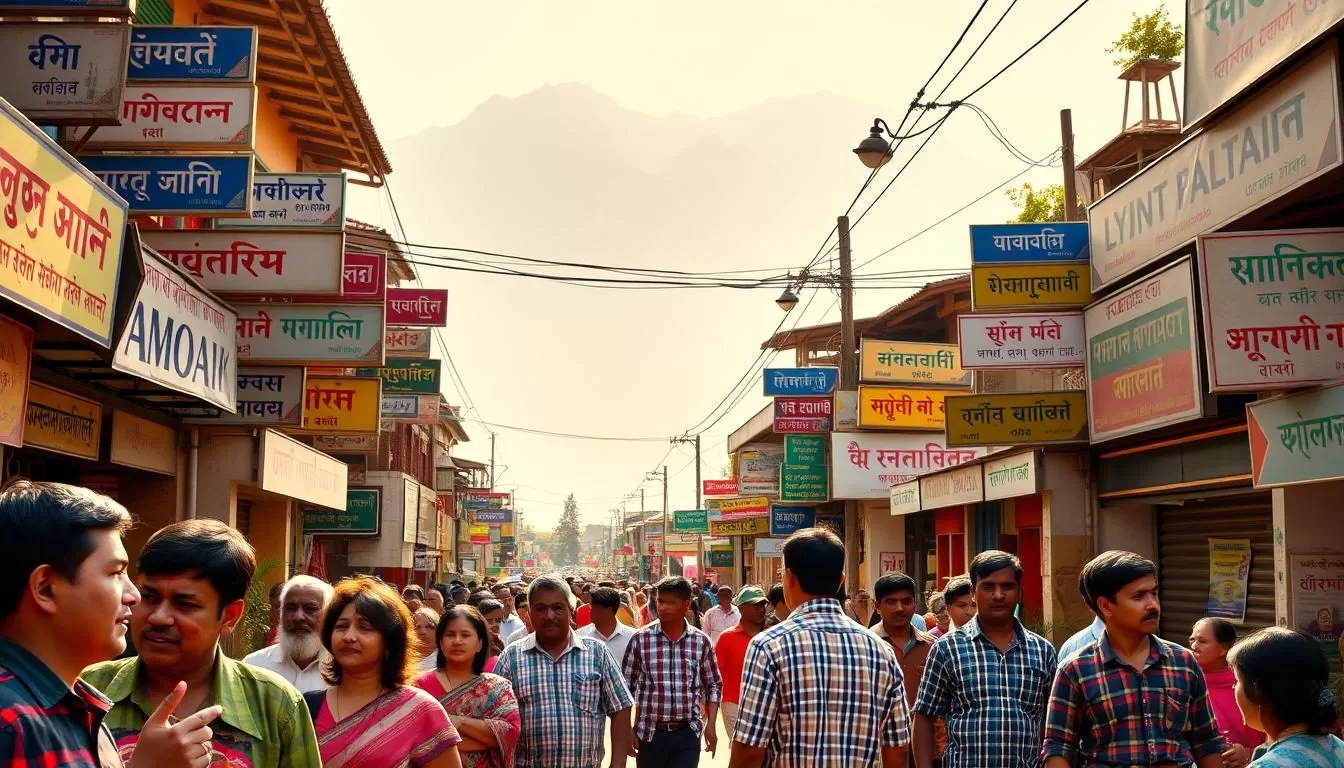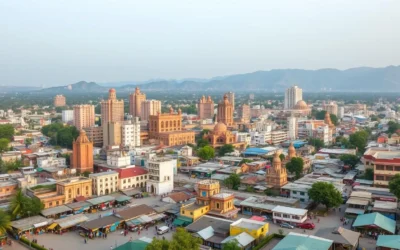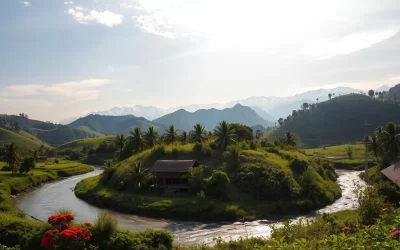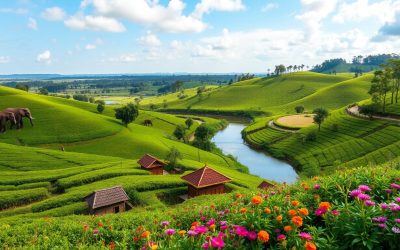You’re about to explore the fascinating linguistic landscape of Assam, a state in Northeast India known for its rich cultural heritage and diverse languages.
The region’s unique geographical position has made it a melting pot of various linguistic influences from Indo-Aryan and Tibeto-Burman language families.
As you delve into the world of languages in this northeastern state, you’ll discover the official language and the various tongues spoken by its people, reflecting the region’s complex history of migrations and cultural exchanges.
Understanding the linguistic diversity of Assam is crucial for anyone looking to visit, do business, or simply learn more about this culturally rich state.
The Linguistic Landscape of Assam
With its strategic location, Assam serves as a gateway to the linguistic diversity of Northeast India, where multiple language families converge. As you explore the state, you’ll encounter a rich tapestry of languages that reflects its diverse ethnic composition and historical influences.
A Gateway to Northeast India’s Language Diversity
Assam stands at the forefront of Northeast India’s linguistic diversity, with Indo-Aryan and Tibeto-Burman language families being predominant. The state’s linguistic ecosystem is further enriched by the presence of Austro-Asiatic languages. This diversity is a result of complex migration patterns and the presence of indigenous populations, making Assam a fascinating case study for linguistic evolution and coexistence.
Key Statistics About Languages in Assam
The linguistic landscape of Assam is characterized by the prevalence of several major languages. Assamese is the most widely spoken language and serves as the lingua franca of the state. Other significant languages include Bodo, a Tibeto-Burman language that is one of the official languages, and Bengali, primarily spoken in the Barak Valley region.
| Language | Language Family | Speakers |
|---|---|---|
| Assamese | Indo-Aryan | Majority |
| Bodo | Tibeto-Burman | Significant minority |
| Bengali | Indo-Aryan | Significant minority in Barak Valley |
Assamese: The Official Language of Assam
Assamese is not just a language; it’s the cultural backbone of Assam, serving as the primary official language. With more than 15 million people communicating in Assamese, it serves as a common tongue in the linguistically diverse region.
History and Development of Assamese
Assamese belongs to the Indo-Aryan language family and has evolved over centuries. Its earliest documented forms date back to the 7th century CE. The language has developed through four major dialect groups: Eastern, Central, Kamrupi, and Goalpariya, each with distinctive features.

Unique Features of the Assamese Language
The Assamese language has unique characteristics that set it apart from other Indo-Aryan languages. Notably, it lacks grammatical gender distinctions and features special phonological characteristics, including the abundant use of “consonant clusters” that give the language its distinctive rhythm.
Assamese Script and Writing System
The Assamese script is derived from the ancient Brahmi script and shares similarities with the Bengali script, though with distinct differences. The writing system consists of 33 consonants and 11 vowels, making it a rich and complex script.
As you explore the Assamese language further, you’ll discover its significance in literature, music, and everyday communication throughout the state. With a rich literary tradition dating back to the 14th century, Assamese continues to evolve while maintaining its cultural significance.
Bodo: The Co-Official Language
Bodo holds a special place in Assam’s linguistic landscape as the state’s co-official language alongside Assamese. As a significant part of Assam’s cultural identity, Bodo has been recognized for its importance in the region.
Recognition and Status of Bodo in Assam
Bodo received official recognition in 2003, marking a significant milestone for the Bodo people and their cultural identity within Assam. This recognition has been crucial in preserving the language and promoting its use.
Characteristics of the Bodo Language
The Bodo language belongs to the Tibeto-Burman branch of the Sino-Tibetan language family, making it linguistically distinct from Indo-Aryan Assamese. It is primarily spoken in the Bodoland Territorial Region (BTR) of Assam, where approximately 1.4 million native speakers maintain this important cultural heritage.
Writing Systems Used for Bodo
The writing system for Bodo has evolved over time. Initially written in Assamese and Latin scripts, it officially adopted the Devanagari script in 1963. Some scholars believe that Bodo once had its own indigenous script called Deodhai, which has unfortunately been lost to history.
| Language Feature | Description |
|---|---|
| Language Family | Sino-Tibetan |
| Speakers | 1.4 million |
| Script | Devanagari (since 1963) |
Bengali in Assam
As you explore the linguistic diversity of Assam, you’ll discover the significant presence of Bengali in certain regions. Bengali, also known as Bangla, is one of the most widely spoken languages in India, with 97 million native speakers. Its widespread usage is not limited to Assam; it’s also the primary language in Bangladesh and West Bengal.
Bengali Speakers in the Barak Valley
The Barak Valley, comprising Cachar, Hailakandi, and Karimganj districts, is home to approximately 3.5 million Bengali speakers. This region maintains strong cultural and linguistic ties to West Bengal and Bangladesh. Bengali enjoys special status in the Barak Valley, being recognized as an official language for administrative purposes following the Language Movement of 1961.
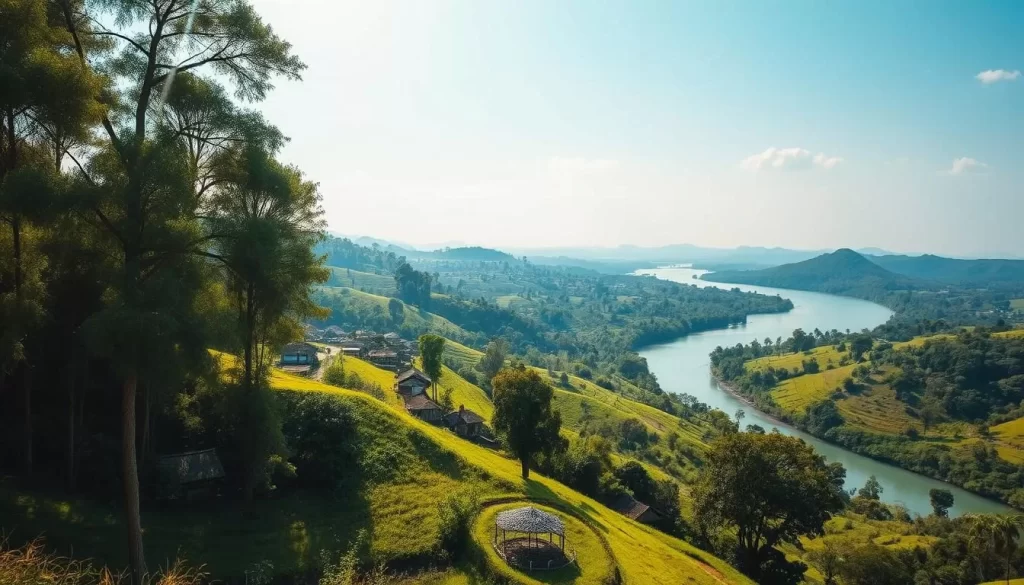
Historical Context of Bengali in Assam
The historical context of Bengali in Assam dates back to the colonial period when administrative boundaries were redrawn, bringing Bengali-speaking regions under Assam’s jurisdiction. This historical event has contributed to the complex linguistic landscape of the state, with Bengali being an integral part of it. Understanding the historical tensions and accommodations between Bengali and Assamese speakers provides insight into Assam’s linguistic politics and identity formation.
Other Major Languages Spoken in Assam
As you explore Assam, you’ll discover a plethora of languages that contribute to the state’s remarkable linguistic diversity. Beyond the official languages, several tribal languages are spoken by indigenous communities, enriching the cultural landscape.
Rabha Language and Its Speakers
The Rabha language, a Tibeto-Burman language, is spoken by approximately 150,000 people primarily in lower Assam and the Goalpara district. Rabha communities maintain their linguistic heritage through oral traditions.
Karbi Language Communities
With around 420,000 speakers in the Karbi Anglong district, the Karbi language represents a significant linguistic community. Karbi communities have distinct cultural traditions and practices.
Dimasa Language Overview
In Dima Hasao district, the Dimasa language is an important marker of cultural identity. Despite modernization pressures, Dimasa speakers continue to maintain their linguistic heritage.
Tiwa and Other Tribal Languages
The Tiwa (or Lalung) language community is spread across central Assam and the hill areas of Karbi Anglong. Tiwa communities preserve their linguistic heritage through oral traditions and community efforts. Other tribal languages also contribute to Assam’s linguistic diversity.
- Many tribal languages face challenges of documentation and preservation.
- Translation services between tribal languages and Assamese or English are increasingly important.
- Understanding the distribution of these languages helps appreciate Assam’s linguistic diversity.
Language Families Represented in Assam, India: Official and Widely Spoken Languages
As you explore the linguistic diversity of Assam, you’ll discover a fascinating convergence of multiple language families. This convergence makes Assam a linguistic treasure trove, with languages from different families contributing to the state’s rich cultural heritage.
Indo-Aryan Languages in Assam
The Indo-Aryan language family is numerically dominant in Assam, with Assamese and Bengali being the most widely spoken languages. These languages have a significant presence in the state, with Assamese being the official language and Bengali being widely spoken in the Barak Valley region.
Tibeto-Burman Languages of the Region
Tibeto-Burman languages form the second-largest language group in Assam, including languages such as Bodo, Karbi, Dimasa, and Rabha. These languages are spoken by various tribal communities throughout the state’s hills and valleys, adding to the linguistic diversity of the region.
Presence of Austro-Asiatic Languages
Austro-Asiatic languages, such as Khasi, are also present in Assam, particularly in the border areas with neighboring Meghalaya. This presence highlights the complex linguistic relationships between Assam and its neighboring states, including Arunachal Pradesh and Nagaland.
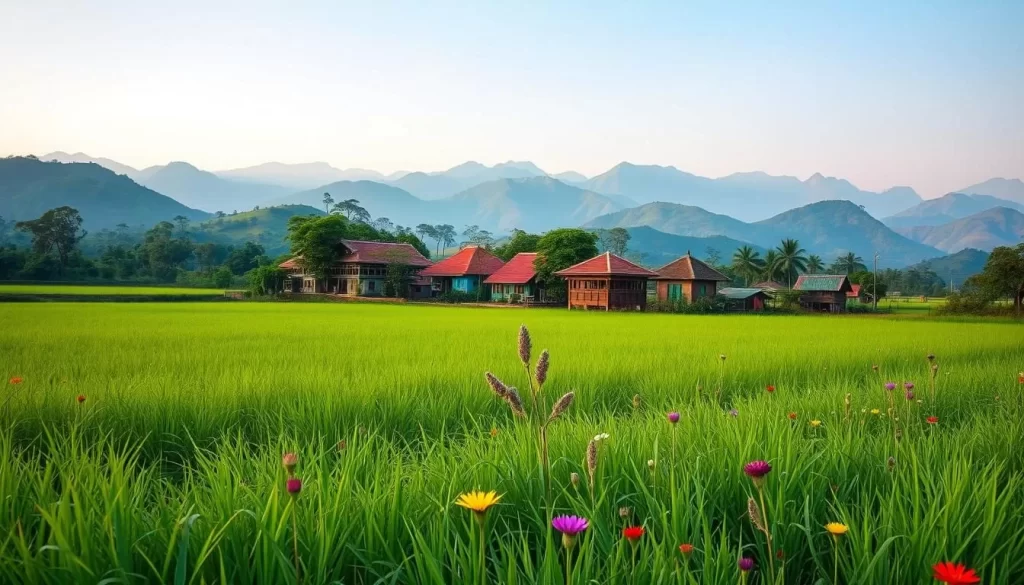
The Role of English in Assam
English has become an integral part of Assam’s educational, administrative, and business landscape. As you navigate the state, you’ll notice its widespread use in various contexts.
English in Education and Administration
In Assam’s educational institutions, English is the primary medium of instruction in many private schools and most colleges and universities. The state government also uses English alongside Assamese for official documents, judicial proceedings, and administrative communications, making it essential for accessing government services.
- English is crucial in educational institutions.
- It’s used in official government documents and communications.
English as a Link Language
English serves as an important link language that bridges communication gaps between speakers of different native languages throughout Assam’s diverse regions. For business and tourism, English provides a common platform for communication, with translation services often facilitating interactions between English speakers and local language communities.
Linguistic Challenges and Preservation Efforts
As you explore the linguistic landscape of Assam, you’ll encounter numerous challenges and efforts to preserve the region’s rich language diversity. The state’s linguistic heritage is deeply intertwined with the cultural identities of various ethnic groups.
Endangered Languages in Assam
Several indigenous languages in Assam are facing the threat of extinction due to declining speaker populations and limited intergenerational transmission. For instance, Deori, Moran, and Tai Phake have fewer than 10,000 speakers each, categorizing them as endangered according to UNESCO. Urbanization and economic pressures further exacerbate the decline of these languages.

Initiatives to Preserve Linguistic Heritage
Various organizations are working to document endangered languages through recording oral traditions, creating dictionaries, and developing standardized scripts. The Centre for Endangered Languages at Tezpur University is one such initiative that conducts research and community engagement to revitalize threatened languages. Additionally, digital technology, including mobile apps and online dictionaries, is playing a crucial role in preservation efforts, helping younger generations connect with their linguistic heritage.
Cultural Significance of Languages in Assam
Languages in Assam are not just a means of communication but are deeply intertwined with the cultural identity of its people. The state’s linguistic diversity is reflected in its rich cultural heritage, with various languages contributing to the unique cultural landscape.
Language and Identity in Assamese Communities
In Assamese communities, language plays a crucial role in shaping identity. The Assamese language, for instance, is a carrier of cultural heritage through its literary traditions, including the Buranjis and the works of Vaishnavite saints like Srimanta Sankardeva. Traditional practices and cultural events are often centered around language, reinforcing its importance in community life.
Festivals and Traditions Tied to Languages
Festivals like Bhasa Gaurav Divas (Language Pride Day) celebrate linguistic heritage and promote awareness about language preservation. Different languages shape distinct oral traditions and performance arts, such as Bhaona (traditional theater) and Bihu songs. These events highlight the significance of language in Assam’s cultural fabric.
| Language | Cultural Significance | Traditional Practices |
|---|---|---|
| Assamese | Carrier of cultural heritage | Buranjis, Vaishnavite literature |
| Bodo | Expression of cultural identity | Bagurumba dance, Bathou religious practices |
| Others | Distinct oral traditions | Bhaona, Bihu songs |
Conclusion: The Future of Assam’s Linguistic Diversity
As you conclude this exploration of Assam’s linguistic landscape, you’re left with a profound appreciation for the region’s rich cultural heritage. The future holds both challenges and opportunities for preserving Assam’s linguistic diversity. Digital technologies are creating new avenues for language documentation and education, allowing smaller language communities to connect across geographical boundaries.
Translation services will continue to play a crucial role in bridging communication gaps between different language communities. Community-led initiatives, supported by growing recognition of multilingualism’s value, will be key to successful language preservation efforts. Your understanding and appreciation of Assam’s diverse languages contribute to a broader recognition of their importance.
The above is subject to change.
Check back often to TRAVEL.COM for the latest travel tips and deals.
